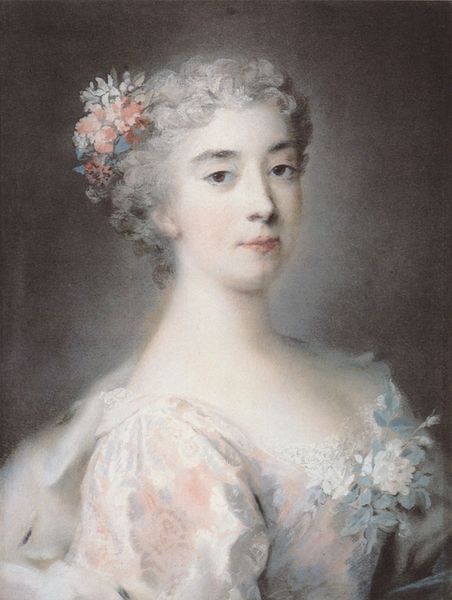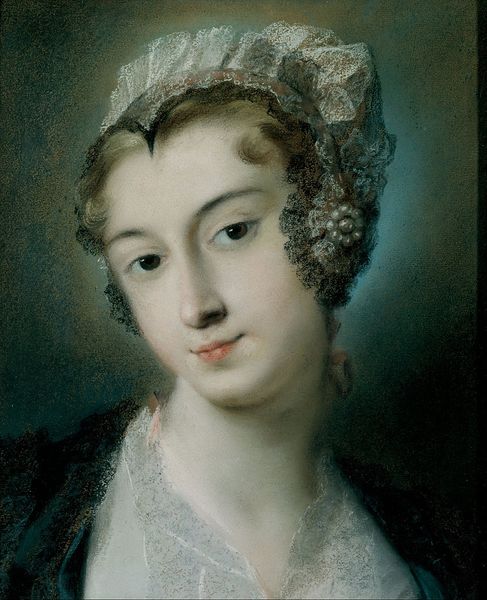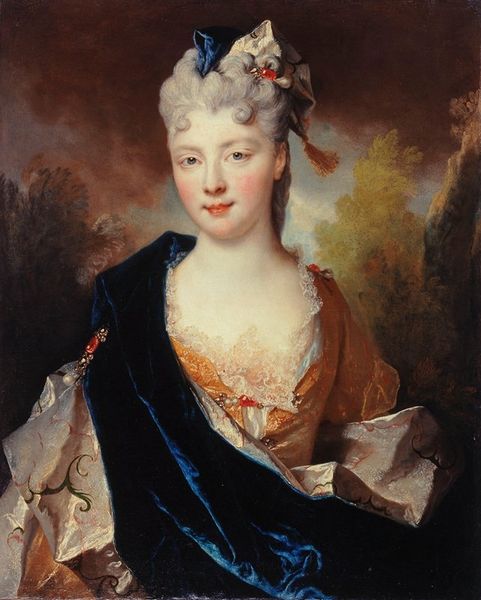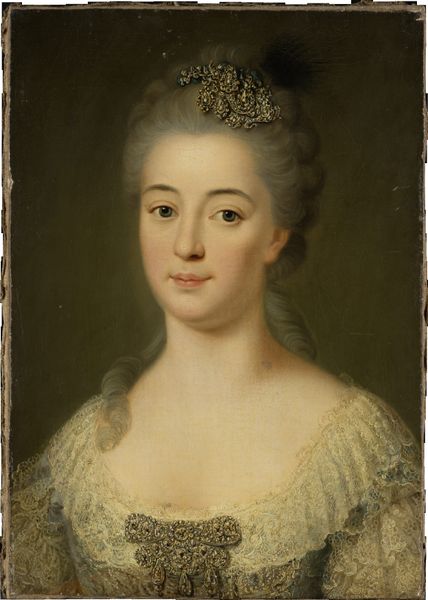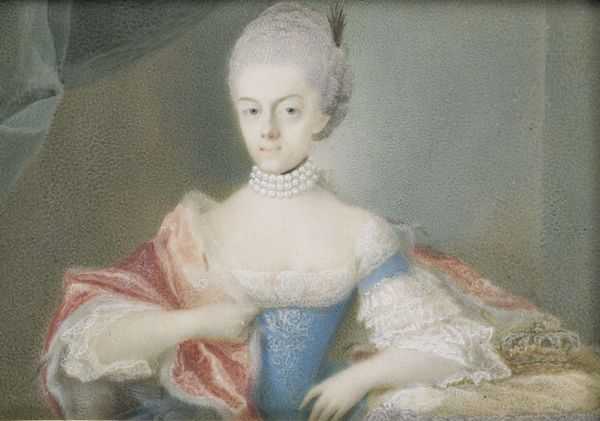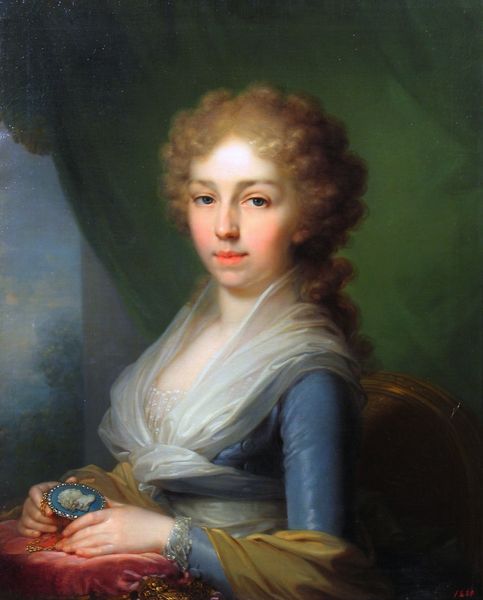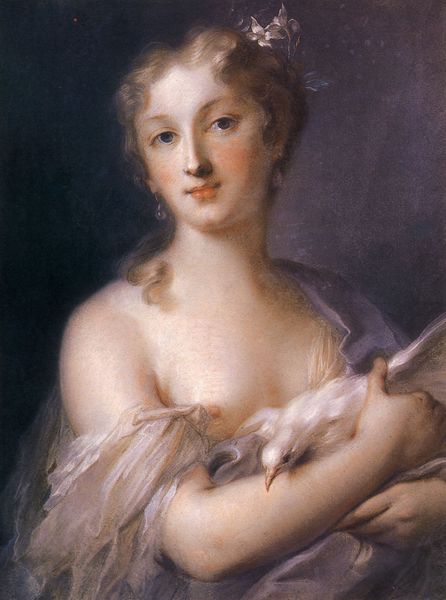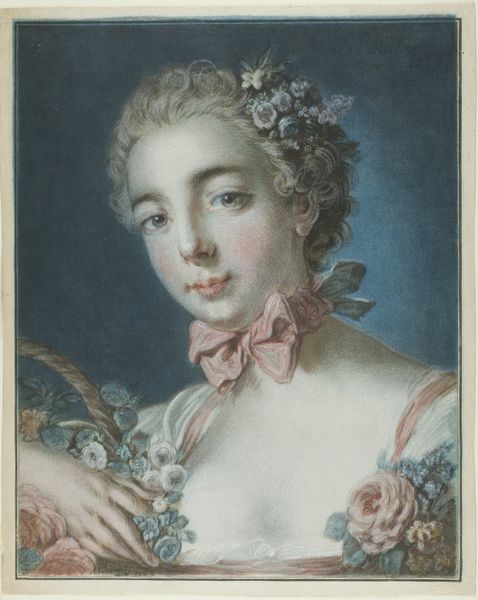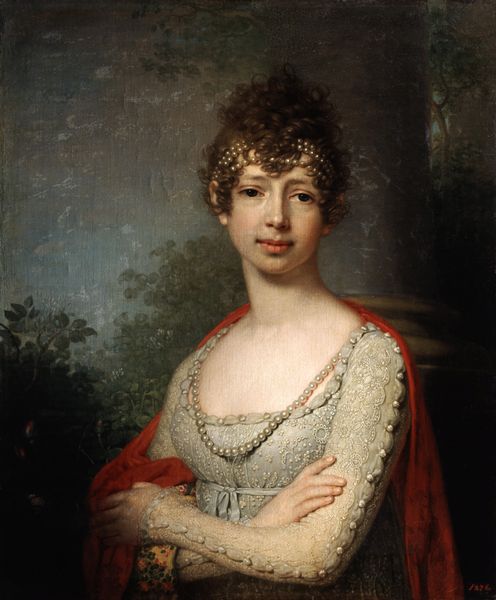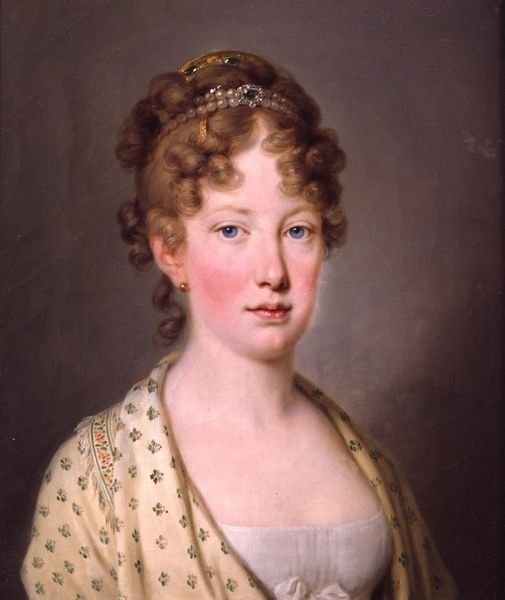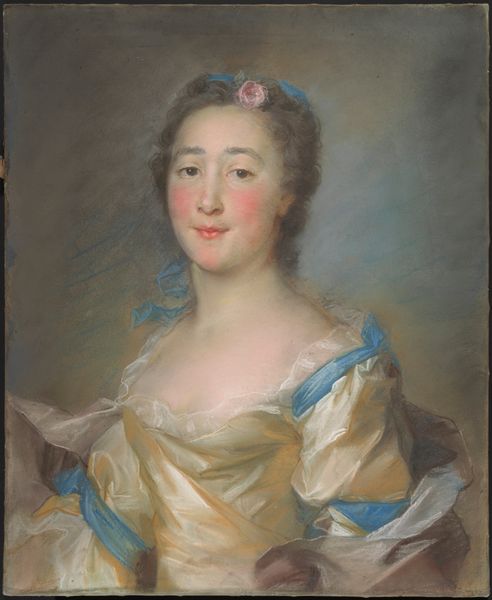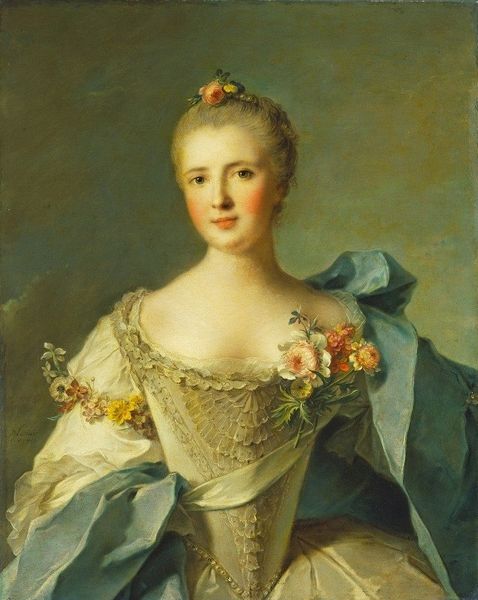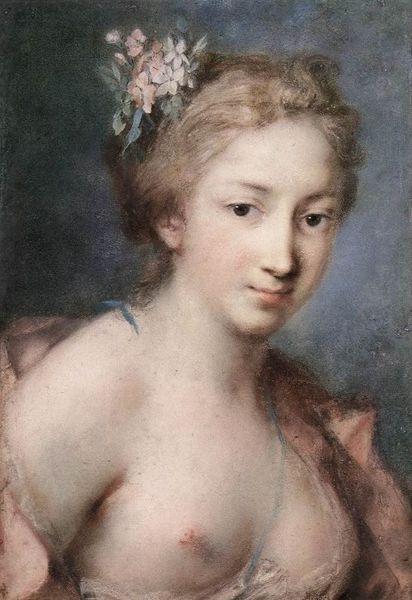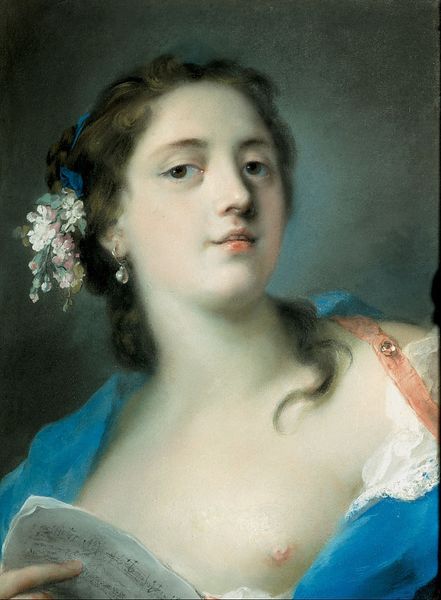
painting, pastel
#
portrait
#
self-portrait
#
head
#
face
#
painting
#
pastel
#
academic-art
#
lady
#
rococo
Copyright: Public domain
Curator: Allow me to introduce you to Rosalba Carriera’s “Maria Theresa, Archduchess of Habsburg,” created around 1730 using pastel. Editor: It's remarkably soft. The rendering feels almost like a whisper. There's an ethereal quality to the light, particularly around her face and shoulders, created using pastel. It contrasts beautifully with the solid, dark background. Curator: Absolutely. Carriera, a Venetian Rococo artist, enjoyed international fame for her pastel portraits. Her success significantly impacted the acceptance of women artists within elite social and artistic circles across Europe. This piece reflects the tastes and the societal values of the period, specifically court portraiture. Editor: Looking at the composition, the delicate coloring and the detail invested in rendering the jewelry and the lace against such a muted background focuses our attention—it subtly guides the viewer directly to the subject’s expression. The execution creates a clear sense of intimacy with the viewer. Curator: Indeed. Consider also Maria Theresa's position as Archduchess and future Empress; images such as this served to promote dynastic power and influence across different European courts. The flowers could also be attributed as emblems that represent her lineage. Editor: Yes, though there’s an undeniably sentimental aspect to her expression that moves beyond simple propaganda. I think that comes through, not just in the subject, but in the nature of pastel as a medium. Curator: I agree, there's definitely an intimacy achieved with the medium that aligns it to personal portrayal. It offers an interesting perspective into the confluence of personal representation and political power at the time. Editor: Exactly. Carriera's skill with pastels allowed her to capture not just Maria Theresa's likeness, but something of her character, while deftly navigating her role within a vast political stage. Curator: And it shows how art played a role in solidifying those identities, inside and out. It really offers much food for thought regarding women in positions of authority at that time, don't you think? Editor: Certainly. There's an interesting interplay between presentation, personal sentiment, and that specific artistic choice.
Comments
No comments
Be the first to comment and join the conversation on the ultimate creative platform.
